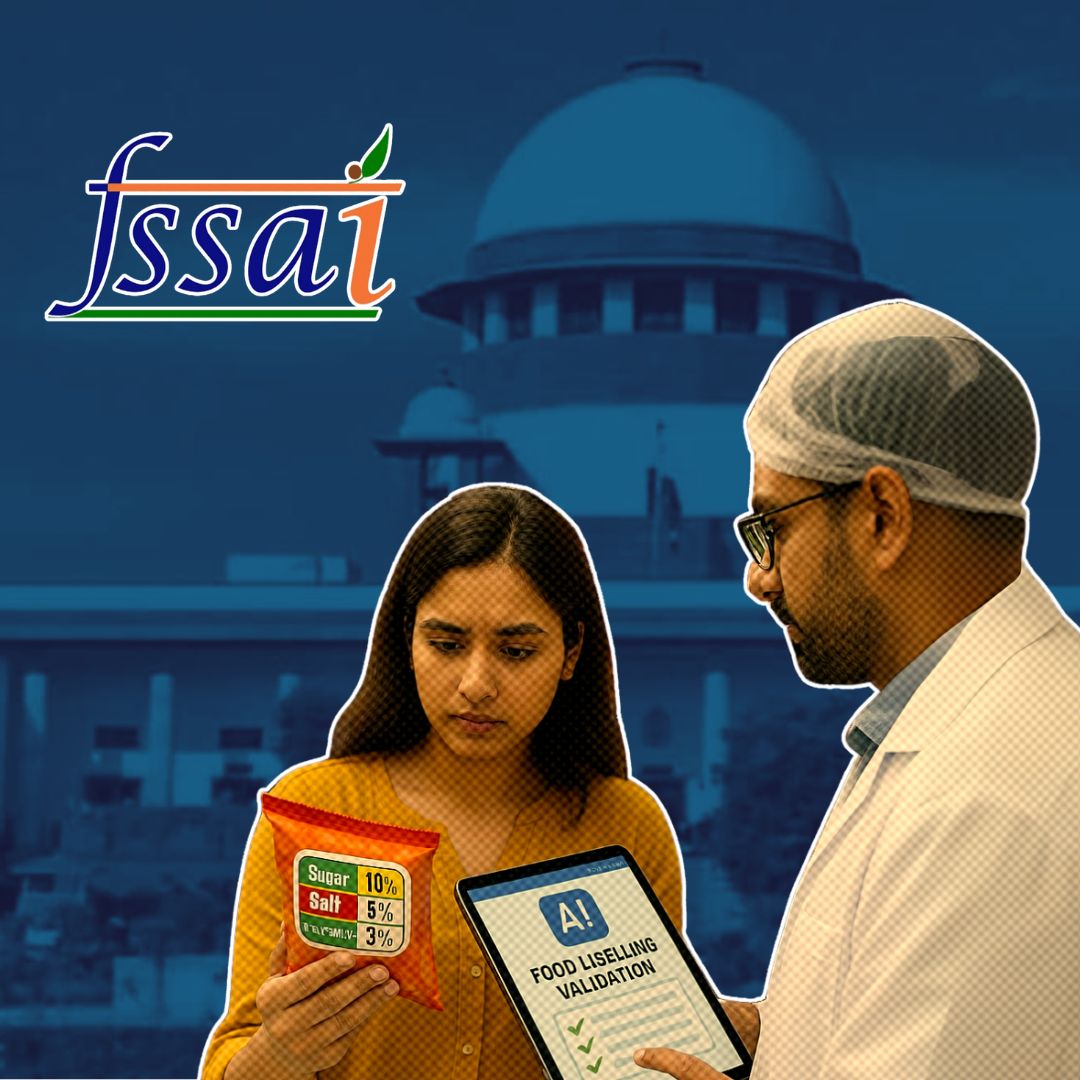The Supreme Court of India has directed the central government to finalise and implement updated food labelling regulations within three months, mandating that packaged food products prominently display key nutritional information such as total sugar, salt, and saturated fat content.
This landmark move aims to empower consumers to make healthier dietary choices and tackle the rising incidence of lifestyle-related diseases like diabetes, hypertension, and heart conditions.
The Food Safety and Standards Authority of India (FSSAI) has been entrusted with overseeing the implementation process, which builds on amendments approved in mid-2024 and further draft regulations released in early 2025. The court’s order follows a Public Interest Litigation (PIL) highlighting the urgent need for transparency in food packaging.
Clear Nutritional Labelling: A Vital Public Health Measure
The new regulations require food manufacturers to display the percentage contribution of sugar, salt (sodium), and saturated fat relative to the recommended daily intake (RDA) in bold, easily visible fonts on the front of packaged products.
This Front-of-Pack Warning Label (FoPWL) system is designed to provide consumers with quick, clear information to help them make informed choices at the point of purchase.
During the Supreme Court hearing, Justice JB Pardiwala emphasised the importance of transparency, stating, “You will know what Kurkure and Maggi are and how their wrappers should be.”
The FSSAI has actively engaged with the public, receiving over 14,000 comments on the proposed norms, reflecting widespread interest and concern. In addition to nutritional labelling, the amendments also mandate clear logos for milk products and explicit declarations for coffee-chicory mixtures, further enhancing consumer awareness.
Recent Updates and Implementation Timeline
Recent developments confirm that the Supreme Court has set a strict three-month deadline from April 2025 for the central government and FSSAI to finalise and enforce these labelling norms. The FSSAI’s draft amendments, published in early 2025, emphasize:
- Bold and enlarged font sizes for per-serve percentage contributions of added sugar, saturated fat, and sodium relative to RDA on the front panel.
- A mandatory logo for all milk and milk products, with size specifications based on packaging dimensions.
- Clear, capitalized declarations for coffee-chicory mixtures on the front panel within a rectangular box.
The government has fixed July 1, 2025, as the annual enforcement date for all amendments to food labelling regulations, providing a predictable compliance timeline for food business operators.
Industry Response and Support Measures
Industry stakeholders have expressed a range of views: while many food manufacturers welcome the clarity and uniformity these regulations bring, some have voiced concerns about the costs and logistical challenges of rapid compliance, especially for small and medium enterprises.
In response, the FSSAI has promised to provide detailed guidelines, technical support, and a phased implementation plan to ease the transition. Additionally, the government plans to launch public awareness campaigns to educate consumers about the new labels and their significance, ensuring the regulations translate into meaningful behavioural change.
Background: Addressing the Surge in Lifestyle Diseases
India is grappling with a growing epidemic of non-communicable diseases (NCDs) such as diabetes, hypertension, and cardiovascular ailments, which are closely linked to unhealthy dietary patterns and increased consumption of ultra-processed foods.
According to recent health surveys, lifestyle diseases account for over 60% of deaths in the country, with poor nutrition being a major contributing factor. Recognising this, the FSSAI introduced the Food Safety and Standards (Labelling and Display) Regulations in 2020, which were amended in July 2024 to incorporate stricter labelling requirements.
These amendments include the Indian Nutritional Rating (INR) system, which rates packaged foods on a scale from 0.5 to 5 stars based on their nutritional profile. The Supreme Court’s intervention highlights the urgency of implementing these measures effectively to protect public health and empower consumers with transparent information.
The Logical Indian’s Perspective
The Supreme Court’s decisive order to enforce transparent and comprehensive food labelling is a significant step forward in promoting healthier eating habits and safeguarding public health. Clear, accessible nutritional information on food packaging can empower consumers to make informed choices, potentially curbing the rising tide of lifestyle diseases that strain families and the healthcare system alike.
However, the success of these regulations will depend on robust implementation, ongoing monitoring, and cooperation from food manufacturers, regulators, and civil society. It is equally important to complement labelling with nutrition education and awareness campaigns to foster lasting behavioural change.












